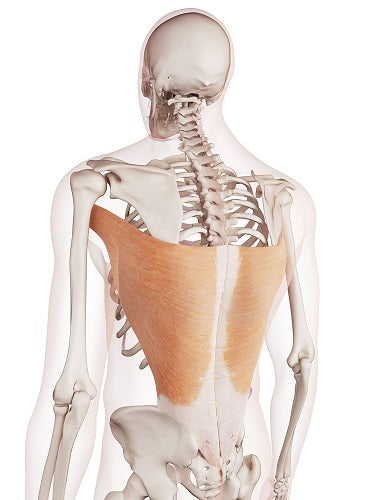
Muscle Anatomy
latissimus dorsi
The latissimus dorsi muscle is located in the posterior aspect of the trunk and is the widest muscle in the human body. It spans across the lower and middle back, contributing to the overall musculature of the back.
Origin:
Originating from multiple points, the latissimus dorsi has broad origins from the spinous processes of the lower thoracic and lumbar vertebrae, the iliac crest, and the lower ribs. It also has indirect origins from the scapula.
Insertion:
The muscle inserts into the floor of the intertubercular groove of the humerus, specifically on the crest of the greater tubercle. This insertion site establishes a connection with the upper part of the arm bone.
Function:
Functionally, the latissimus dorsi is a powerful extensor, adductor, and medial rotator of the shoulder joint. It is actively involved in movements like arm extension (e.g., pulling the arms downward during activities like climbing or rowing), shoulder adduction (pulling the arms toward the body), and medial rotation of the arm. Additionally, the muscle assists in various activities requiring forceful arm movements and contributes to the dynamic stability of the spine during activities like lifting. The latissimus dorsi plays a crucial role in the functional dynamics of the back and upper limbs.
